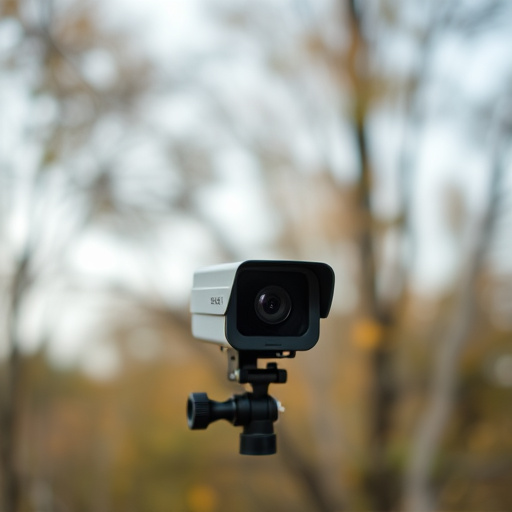Undetectable wireless security cameras pose a significant privacy threat, prompting the development of advanced detection techniques. Mirror and reflection analysis, employing AI and image processing algorithms, helps identify hidden cameras in homes and offices. These methods combat reflective distortions, enhancing visual clarity and ensuring comprehensive surveillance despite strategic hiding places. Specialized home security systems integrate thermal imaging, motion sensors, and infrared technology to counter these stealthy devices, prioritizing residents' privacy and security.
In today’s digital age, the rise of undetectable wireless security cameras poses a subtle yet significant threat to privacy. As technology advances, these spy lenses become increasingly sophisticated, reflecting images in ways that go unnoticed by the naked eye. This article delves into spy lens reflection detection techniques, exploring methods to identify hidden cameras and safeguard your home from these invisible intrusions. From understanding basic reflections to advanced mirror detection technologies, we provide insights for enhanced security.
- Understanding Spy Lens Reflection Detection
- Wireless Security Cameras: The Undetectable Threat
- Identifying Reflections in Digital Imagery
- Advanced Techniques for Mirror Detection
- Home Security: Protecting Against Hidden Cameras
Understanding Spy Lens Reflection Detection
Spy lens reflection detection techniques are crucial for identifying hidden cameras, especially undetectable wireless security cameras that operate discreetly in homes and offices. These advanced devices utilize sophisticated algorithms to analyze visual data, searching for subtle reflections that might indicate the presence of a spy lens. By examining patterns, lighting conditions, and angular discrepancies, these systems can pinpoint the location of clandestine surveillance equipment.
Understanding how light interacts with glass surfaces is key to this process. Reflections can be minimized by employing strategic positioning, advanced lenses, or specialized coatings; however, dedicated detection software is often necessary to uncover these concealed threats. This technology plays a vital role in safeguarding privacy and ensuring a secure living environment, especially as more undetectable wireless security cameras enter the market.
Wireless Security Cameras: The Undetectable Threat
Undetectable wireless security cameras have emerged as a modern-day threat, posing significant challenges to privacy and security. These tiny yet powerful devices operate remotely, capturing video footage and images without drawing attention—a feature that makes them incredibly appealing but also highly dangerous for unsuspecting victims. They can be easily hidden within everyday objects like plants, light fixtures, or even wall outlets, making it nearly impossible to spot them with the naked eye.
The very nature of undetectable wireless security cameras allows them to transmit data over Wi-Fi networks, raising serious concerns about data privacy and security breaches. As more homes and businesses opt for remote surveillance solutions, the demand for advanced detection techniques has become paramount. Innovative methods are needed to counter this evolving threat and ensure that individuals can protect their personal spaces from these invisible peepers.
Identifying Reflections in Digital Imagery
In the realm of home security, undetectable wireless security cameras have become a popular choice for those seeking discreet surveillance solutions. However, with their diminutive size and advanced technology, these cameras can sometimes present unique challenges when it comes to identifying reflections in digital imagery. Reflections, whether from windows, mirrors, or shiny surfaces, can interfere with the clear capture of visual data, potentially obscuring critical details that are essential for effective monitoring.
To overcome this obstacle, modern image processing techniques have been developed to detect and minimize reflective artifacts. By employing advanced algorithms, these systems can analyze pixel patterns and identify areas where light is bouncing off surfaces. Through sophisticated edge detection and contrast enhancement methods, reflections can be minimized or even eliminated from the final frame, ensuring that vital information remains clear and discernible. This capability is particularly valuable in low-light conditions or when monitoring spaces with multiple reflective surfaces.
Advanced Techniques for Mirror Detection
In the realm of undetectable wireless security cameras, advanced techniques for mirror detection play a pivotal role in enhancing surveillance capabilities. These sophisticated methods leverage cutting-edge algorithms and sensor technology to identify and neutralize reflective surfaces like mirrors that can compromise the covert operation of hidden cameras. By employing unique signal processing algorithms, these systems can detect subtle differences in light reflection patterns, ensuring that any camera hidden behind or within a mirror remains unseen.
The integration of artificial intelligence (AI) further propels mirror detection technology, allowing for real-time analysis and adaptive learning. AI-powered solutions can automatically learn and adapt to various environmental conditions, including lighting variations and different types of mirrors, thereby improving accuracy and reliability. This advancement is particularly crucial in dynamic settings where traditional methods might struggle to discern genuine reflections from camera signals, making it an indispensable tool for those seeking unparalleled wireless security.
Home Security: Protecting Against Hidden Cameras
Home security has evolved significantly with the advent of advanced technology, particularly in the realm of hidden camera detection. While undetectable wireless security cameras might sound like something out of a spy novel, they’re a growing concern for homeowners. These tiny, often invisible devices can be easily concealed within everyday objects, capturing sensitive information without their presence being known.
To counter this threat, home security systems now incorporate specialized tools designed to detect and neutralize hidden cameras. Advanced thermal imaging, infrared sensors, and motion-activated alerts are among the techniques used to uncover these undetectable wireless security cameras. By integrating such measures, homeowners can create a secure environment, ensuring their privacy and peace of mind in an era where surveillance technology is becoming increasingly sophisticated.
Undetectable wireless security cameras, once a concern only for professionals, have now entered the home security landscape. However, with advancements in spy lens reflection detection techniques, homeowners can now safeguard their privacy effectively. By understanding how to identify reflections in digital imagery and employing advanced mirror detection technologies, it’s possible to uncover hidden cameras and protect personal spaces from these unsighted threats.
